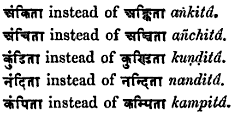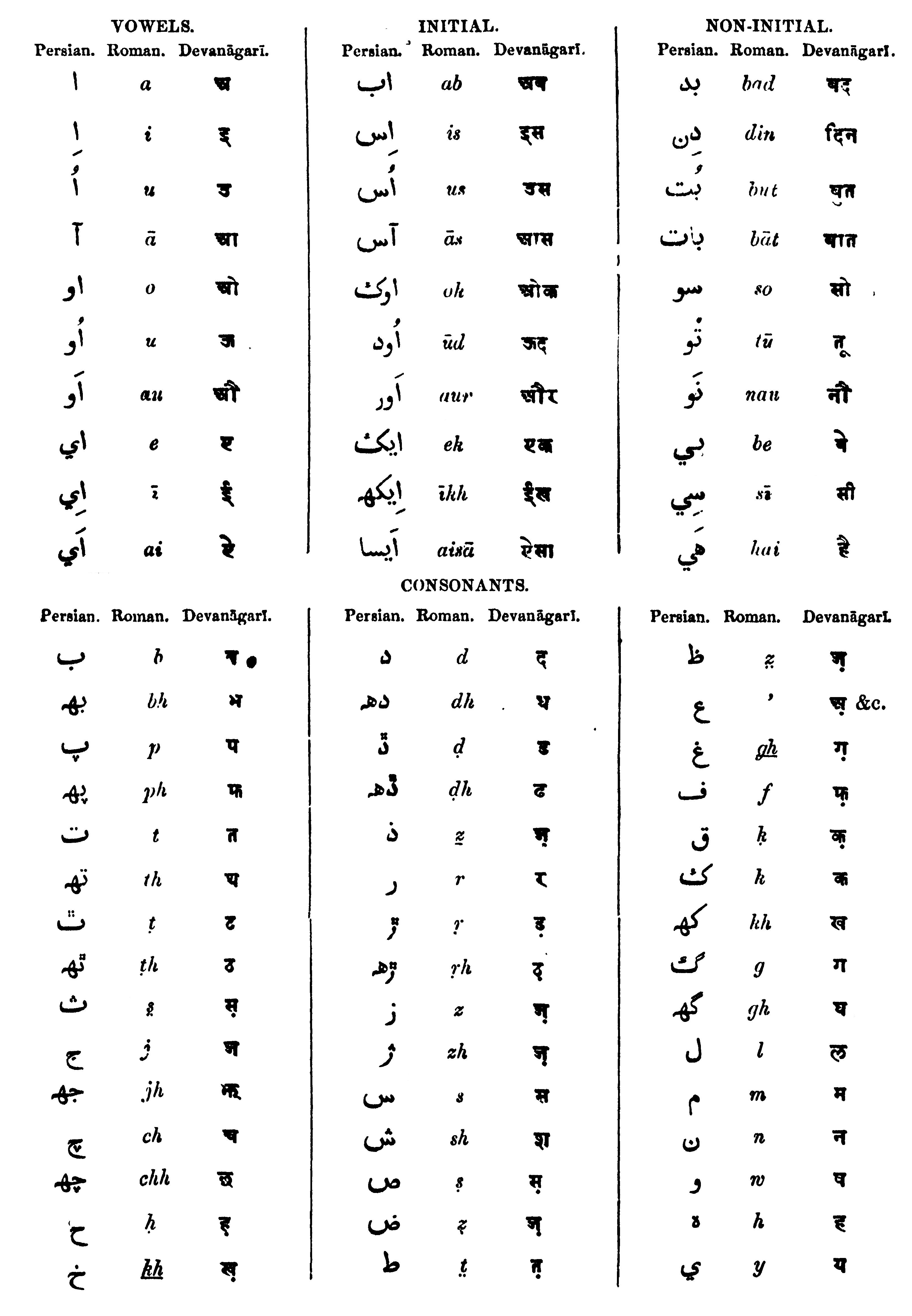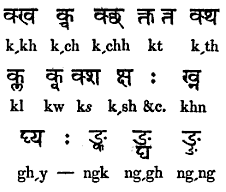Hunterian transliteration on:
[Wikipedia]
[Google]
[Amazon]
The Hunterian transliteration system is the "national system of
 The original precursor to the Hunterian system was a transliteration method developed by
The original precursor to the Hunterian system was a transliteration method developed by
 Main Hindustani vowels with their various representations:
Main Hindustani vowels with their various representations:


 In the Hunterian system, implicit
In the Hunterian system, implicit
romanization
Romanization or romanisation, in linguistics, is the conversion of text from a different writing system to the Roman (Latin) script, or a system for doing so. Methods of romanization include transliteration, for representing written text, and ...
in India" and the one officially adopted by the Government of India
The Government of India (ISO: ; often abbreviated as GoI), known as the Union Government or Central Government but often simply as the Centre, is the national government of the Republic of India, a federal democracy located in South Asia, c ...
. Hunterian transliteration was sometimes also called the ''Jonesian transliteration system'' because it derived closely from a previous transliteration method developed by William Jones (1746–1794). Upon its establishment, the Sahitya Akademi
The Sahitya Akademi, India's National Academy of Letters, is an organisation dedicated to the promotion of literature in the languages of India. Founded on 12 March 1954, it is supported by, though independent of, the Indian government. Its of ...
(India's National Academy of Letters) also adopted the Hunterian method, with additional adaptations, as its standard method of maintaining its bibliography of Indian-language works.
History
 The original precursor to the Hunterian system was a transliteration method developed by
The original precursor to the Hunterian system was a transliteration method developed by Charles Wilkins
Sir Charles Wilkins (1749 – 13 May 1836) was an English typographer and Orientalist, and founding member of The Asiatic Society. He is notable as the first translator of '' Bhagavad Gita'' into English, He supervised Panchanan Karmakar to ...
, who is sometimes called the "father of Devanagari
Devanagari ( ; , , Sanskrit pronunciation: ), also called Nagari (),Kathleen Kuiper (2010), The Culture of India, New York: The Rosen Publishing Group, , page 83 is a left-to-right abugida (a type of segmental Writing systems#Segmental syste ...
typography" because he was also the creator of the first Devanagari typeface. William Jones, who also founded the Asiatic Society
The Asiatic Society is a government of India organisation founded during the Company rule in India to enhance and further the cause of "Oriental research", in this case, research into India and the surrounding regions. It was founded by the p ...
, further developed the transliteration method. It was given a more complete form in the late nineteenth century by William Wilson Hunter
Sir William Wilson Hunter (15 July 18406 February 1900) was a Scottish historian, statistician, a compiler and a member of the Indian Civil Service.
He is most known for ''The Imperial Gazetteer of India'' on which he started working in 1869, ...
, then Surveyor General of India. When it was proposed, it immediately met with opposition from supporters of the phonetic Dowler system, which climaxed in a dramatic showdown in an India Council meeting on 28 May 1872 where the new Hunterian method carried the day. The Hunterian method was inherently simpler and extensible to several Indic scripts because it systematized grapheme
In linguistics, a grapheme is the smallest functional unit of a writing system.
The word ''grapheme'' is derived and the suffix ''-eme'' by analogy with ''phoneme'' and other names of emic units. The study of graphemes is called ''graphemics' ...
transliteration, and it came to prevail and gain government and academic acceptance. Opponents of the grapheme transliteration model continued to mount unsuccessful attempts at reversing government policy until the turn of the century, with one critic calling appealing to "the Indian Government to give up the whole attempt at scientific (i.e. Hunterian) transliteration, and decide once and for all in favour of a return to the old phonetic spelling."
Additional languages and adaptations
Over time, the Hunterian method extended in reach to cover several Indic scripts, including Burmese andTibetan
Tibetan may mean:
* of, from, or related to Tibet
* Tibetan people, an ethnic group
* Tibetan language:
** Classical Tibetan, the classical language used also as a contemporary written standard
** Standard Tibetan, the most widely used spoken dial ...
. The Hunterian system was used to establish writing systems that used the Latin alphabet for some Indian languages that were previously not associated with a written script, such as Mizo. In the case of Mizo, the Hunterian-based writing system "has proved hugely successful." Provisions for schwa deletion in Indo-Aryan languages
Schwa deletion, or schwa syncope, is a phenomenon that sometimes occurs in Assamese, Hindi, Urdu, Bengali, Kashmiri, Punjabi, Gujarati, and several other Indian languages with schwas that are implicit in their written scripts. Languages like ...
were also made where applicable, e.g. the Hindi कानपुर is transliterated as ''kānpur'' (and not ''kānapura'') but the Sanskrit क्रम is transliterated as ''krama'' (and not ''kram''). The system has undergone some evolution over time. For instance, long vowels were marked with an acute accent
The acute accent (), , is a diacritic used in many modern written languages with alphabets based on the Latin, Cyrillic, and Greek scripts. For the most commonly encountered uses of the accent in the Latin and Greek alphabets, precomposed ch ...
in the original version, but this was later replaced in the 1954 Government of India update with a macron. Thus, जान ('life') was previously romanized as ''ján'' but began to be romanized as ''jān''. Additional diacritics have been proposed for various purposes, such as disambiguating Nastaʿlīq
''Nastaliq'' (; fa, , ), also romanized as ''Nastaʿlīq'', is one of the main calligraphic hands used to write the Perso-Arabic script in the Persian and Urdu languages, often used also for Ottoman Turkish poetry, rarely for Arabic. ''Nasta ...
letters which map to a single Devanagari grapheme (e.g. and which all map to ). Some languages of the region are tonal, such as Mizo and Punjabi, and accent marks over vowels have been repurposed to indicate tone for some of them.
Vowels
 Main Hindustani vowels with their various representations:
Main Hindustani vowels with their various representations:
Consonants


 In the Hunterian system, implicit
In the Hunterian system, implicit schwa
In linguistics, specifically phonetics and phonology, schwa (, rarely or ; sometimes spelled shwa) is a vowel sound denoted by the IPA symbol , placed in the central position of the vowel chart. In English and some other languages, it rep ...
s are denoted by the transliterated schwa vowel in Devanagari, ''a'' (अ), and excluded as necessary under schwa deletion rules. Aspirations are represented by ''h''. Retroflex graphemes are often represented by a diacritic dot under the Latin consonant that represents the equivalent dental graphemes in proposals (some of which predate even the Hunterian method), though this has not officially been accepted by the Indian government. Halants are indicated by either leaving out a vowel after the transliterated consonant or, in new proposals (not formally approved by the Indian government), with a period after the applicable consonant (e.g. जल्दी – ''jal.di''). Initially, italics were sometimes used to differentiate consonants such as ख ("kh") and ख़ ("''kh''"), but later macrons and diacritics began to be used more extensively.
Examples
Example: मैं अपने संबंधी से कारख़ाने में मिला और उसने मुझे चाय पिलाई। वह बारिश के कारण फ़सलों को हुए नुक़सान की वजह से चिंतित था। मैंने उसे अपनी ख़बर सुनाई। क्योंकि मुझे निकलना था, इसीलिए कुछ देर बाद मैंने क्षमा माँगी और वहाँ से रवाना हुआ। With diacritics: Without any diacritics: Notes: संबंधी can interchangeably be written several different ways in Hindi: संबंधी, सम्बंधी, संबन्धी or सम्बन्धी. Example: इस साल ग्रीष्मकालीन वर्षा ज़्यादा होने से अमरूद और बेर की क़िल्लत देखी गई। मज़े की बात यह है कि सेब और ख़ुबानी की क़ीमतें कम हैं क्योंकि उत्तराखंड में गोदाम भरें हैं. With diacritics: Without any diacritics:Criticism
The Hunterian system has faced criticism over the years for not producing phonetically accurate results and being "unashamedly geared towards an English-language receiver audience." Specifically, the lack of differentiation betweenretroflex
A retroflex ( /ˈɹɛtʃɹoːflɛks/), apico-domal ( /əpɪkoːˈdɔmɪnəl/), or cacuminal () consonant is a coronal consonant where the tongue has a flat, concave, or even curled shape, and is articulated between the alveolar ridge and the ha ...
and dental consonants (e.g. द and ड are both represented by ''d'') has come in for repeated criticism and inspired several proposed modifications of Hunterian, including using a diacritic below retroflexes (e.g. making द=''d'' and ड=''ḍ'', which is more readable but requires diacritic printing) or capitalizing them (e.g. making द=''d'' and ड=''D'', which requires no diacritic printing but is less readable because it mixes small and capital letters in words).
See also
*William Wilson Hunter
Sir William Wilson Hunter (15 July 18406 February 1900) was a Scottish historian, statistician, a compiler and a member of the Indian Civil Service.
He is most known for ''The Imperial Gazetteer of India'' on which he started working in 1869, ...
*Devanagari transliteration
Devanagari is an Indian script used for many languages of India and Nepal, including Hindi, Marathi, Nepali and Sanskrit. There are several somewhat similar methods of transliteration from Devanagari to the Roman script (a process sometimes ...
*ISO 15919
ISO 15919 (Transliteration of Devanagari and related Indic scripts into Latin characters) is one of a series of international standards for romanization by the International Organization for Standardization. It was published in 2001 and uses dia ...
*International Alphabet of Sanskrit Transliteration
The International Alphabet of Sanskrit Transliteration (IAST) is a transliteration scheme that allows the lossless romanisation of Brahmic family, Indic scripts as employed by Sanskrit and related Indic languages. It is based on a scheme that ...
* Mizo language writing system
Notes
This will only display in theNastaliq
''Nastaliq'' (; fa, , ), also romanized as ''Nastaʿlīq'', is one of the main calligraphic hands used to write the Perso-Arabic script in the Persian and Urdu languages, often used also for Ottoman Turkish poetry, rarely for Arabic. ''Nast ...
style if you have a suitable Urdu font installed. If this and this looks like these four then you are probably seeing it written in a modern Arabic style.
References
{{Reflist Hindustani orthography Romanization of Brahmic Hindi Sanskrit transliteration